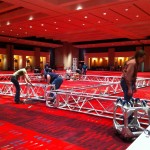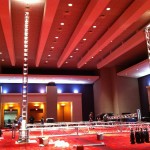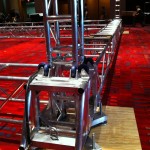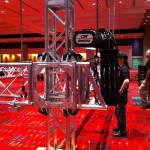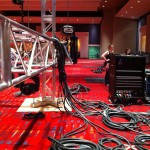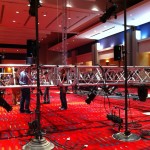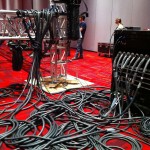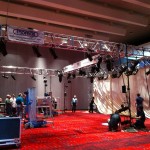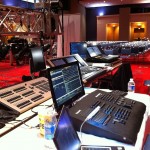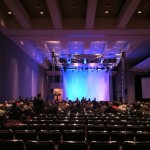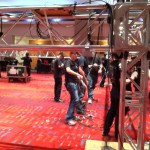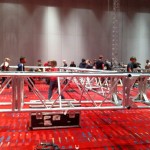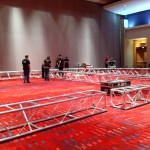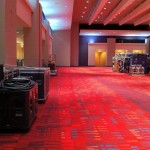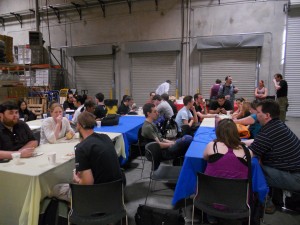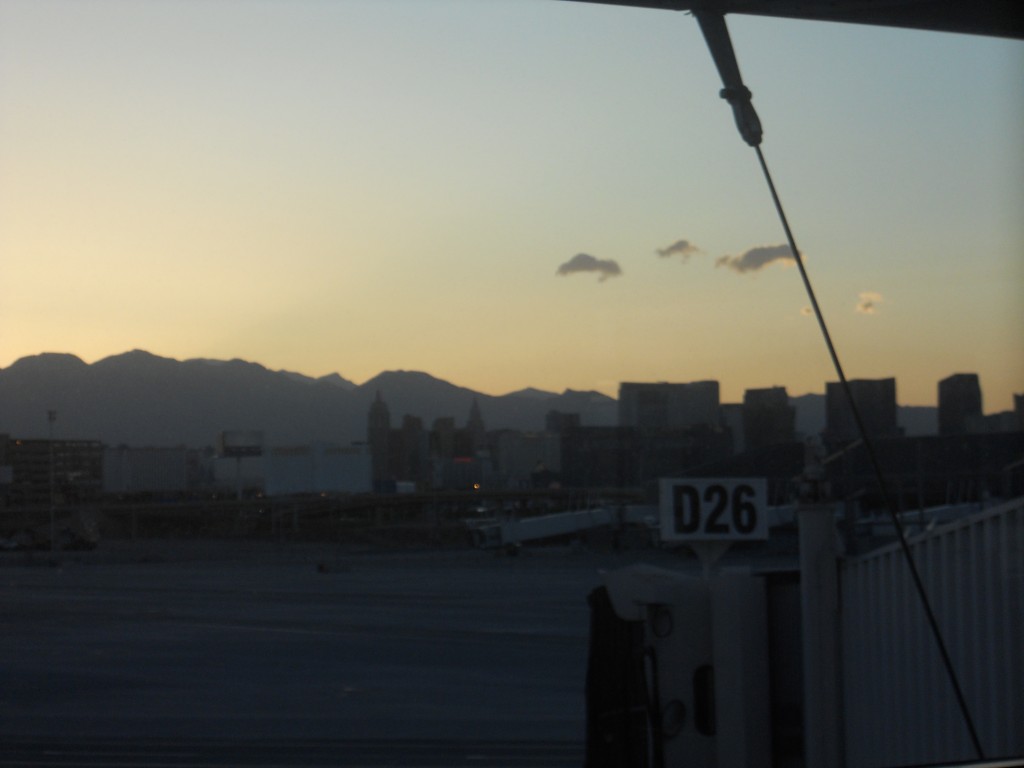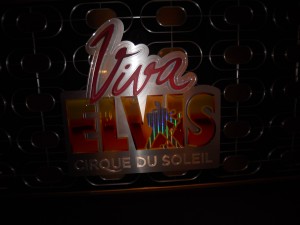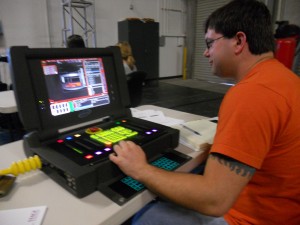eSET Skills Test Launched by USITT
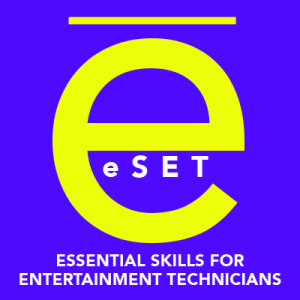 How important do you think it is to have knowledge and understanding of your professional career? How do you express your level of competence in your field to an employer? Sure, you did the college thing, aced your classes and received your degree. Now how about putting that learned knowledge to work. Or maybe you went the school-of-hard-knocks approach to the industry. You learn everything you know while on the job.
How important do you think it is to have knowledge and understanding of your professional career? How do you express your level of competence in your field to an employer? Sure, you did the college thing, aced your classes and received your degree. Now how about putting that learned knowledge to work. Or maybe you went the school-of-hard-knocks approach to the industry. You learn everything you know while on the job.
Any way you look at it, there needs to be a standard way of measuring ones knowledge of their profession against others or to meet a jobs specific requirements. USITT has announced the launch of their Essential Skills for Entertainment Technicians, or eSET.
More from USITT
This new proficiency program for entry-level technicians has launched its first online skills and safety tests in three disciplines — Lighting & Electrics, Rigging, and Costuming — as well as the basic Terms & Safety Test that’s a prerequisite to take any eSET exam.
In the coming years, USITT’s eSET Council will add exams in other disciplines including Audio, Scenery, Projection, and Wigs & Makeup. eSET offers a way for employers to test their technicians’ skills, and for technicians to show their skill sets.
With concern for safety, liability, and best practices taking center stage in the live events world, USITT has developed this unique tool to measure the preparedness of entry-level employees and volunteers who perform technical tasks.
USITT Executive Director David Grindle said the goal is to give employers confidence that someone with an eSET certificate has the basic skills and knowledge to perform a technical job – at a theatre, school, house of worship, or live entertainment facility.
“If two students come to you with degrees in theatre applying for a job as an electrician, how do you know what they know?” Director David Grindle asked. “With an eSET certificate, you know which candidate has a strong knowledge of the subject.”
eSET tests are written by groups of professionals who hire entry level employees, and are designed to test proficiency at that level. “eSET offers employers the same confidence in a worker at entry level as ETCP gives them on an advanced level,” Grindle said.
eSET comes in two parts. Part 1 is an online exam; Part 2 is a practical exam. Online exams in the first disciplines are live now at www.usitt.org/eset. The first practical exams will be held during USITT 2016 March 16-19 in Salt Lake City. Passing each part earns a certificate; those who pass both written and practical tests also earn an eSET pin.
“Potential employees can bring an employer a certificate stating they have passed only Part 1 of eSET, or Parts 1 and 2,” Grindle said. “Seeing an eSET certificate gives you greater confidence in the skill set of the potential employee.” Current employees are also eligible to take the exams, which cost only $40 for the first subject and are half-price for additional subjects.
eSET also offers a glossary of terms and a mobile app to help beginners learn over 2,000 terms used in entertainment technology. The app for iPhone and iPad can be found here. The android app is expected to go live on Feb. 1. Look for it, and more info about eSET, at www.usitt.org/eset.
USITT 2011 Recap: Reflections from the Light Lab
It is hard to believe how quickly time flies. Two months ago many folks were returning and recuperating from another successful USITT conference in North Carolina. Every other year the Lighting Commission hosts a “light lab” and the 2011 lab was certainly a highlight; as six of the commissions sessions were held there in Ballroom A/B.
What is the light lab? It is many things: a space where sessions are presented; a place for students, educators and professionals to mingle and network; and a neutral ground for anyone who wishes to learn about equipment they do not know about or perhaps to share their experiences, tips and tricks to those who are curious about the lab and its components.
This year, there were many great sessions presented in the lighting lab, beginning with “troubleshooting the lighting rig.” After a full day of loading in, patching, and troubleshooting to get the rig working, presenters “broke” portions of the system for volunteers to put into practice the topics and steps discussed. “LED’s in the Light Lab” introduced a number of the latest fixtures to a packed house: over 300 attendees! Examples of various color temperatures of “white” light, color mixing, color saturation, and remote focus-ability were highlights of this session. Day 2 brought “Lighting Projects for the Classroom” which focused on activities within a light lab, while also acting as a “call for submissions” for the forthcoming update to the 1992 USITT publication “Practical Projects for Teaching Lighting Design – A Compendium.” Submissions are being collected at this time, and a juried selection is slated to take place later this year. (Questions regarding submitting a project can be directed through the USITT Lighting Commission Page later this summer.) Rounding out day 2’s activities in the lab was “Lighting Make-up, Costumes & Multi-Ethnic Casts” giving lovely visual examples of how lighting enhances, or deters from, the form. The last day in the light lab began with a cross-commission session, “Health & Safety: Rigging Safety for Ground Support Truss” which utilized the structure of the rig to its full extent and was a good reminder to all of the safety checks and practices to be performed when working with ground supported truss. Closing the light lab sessions was the “Using Color in Lighting” presentation by Mr. Mark Stanley; a great refresher for the experienced and valuable information and questions for the novices.
Light Lab demystified:
One of the things I hear most often in the light lab is: this is great! Why is there not a light lab next year? The light lab takes a lot of planning, time, money, energy, and volunteers to put together. Sessions are proposed and chosen during the conference a year, or sometimes two or more, in advance. Members of the light lab committee and national committee are charged with various tasks from: chairing the lab in its entirety, sourcing and securing equipment, sourcing and securing a site and style of lab (flown truss, ground support truss, theatrical venue, etc), drafting the lab plot, serving as master electrician for the lab, coordinating student volunteers (those volunteers who are current students and who work the conference for their registration), coordinating adult volunteers (the rest of the volunteers), coordinating sound and video needs, coordinating and consulting on rigging, coordinating signage, consulting on technology, on-site coordinating, and a venue liaison, among many other roles that must take place to generate the lab.
Tips for getting involved:
Every year, whether it is a light lab year or a non-lab year, the commission holds meetings where the commissioners and light lab committee members are present. Talking to one of them directly at any time during the conference and expressing interest is a great way to start; if individual interest becomes peaked after the conference is over however, a direct email contact can be made through the USITT contact sheet or generally through the vice commissioner of communication, who will pass along the information to the appropriate coordinator or commissioner.
The light lab is organic from year to year, some years require more from volunteers than others yet those who give graciously gain much in the end, if they choose to partake of it. This year many were able to see (some for the first time) a self-climbing truss system graciously loaned to the lab by Thomas Truss. For those in education, or in places with limited budgets, having the opportunity to have some hands-on time with four separate consoles all actively on the network at once was something to remember. Having the opportunity to learn from, or just observe master programmers such as Bobby Harrell at the Strand VL 16 desk or Hideaki Tsutsui at the GrandMA, or listening in as ETC’s Tracy Fitch discussed the intricacies of having all four consoles online at once via streaming ACN was a particularly nice treat.
If you missed it this year, consider it for USITT 2013. It is a great place to learn, to grow and to give back.
***************************
Images from the 2011 USITT Lighting Lab:
***************************
Some of the donors and their equipment seen in the 2011 USITT Lighting Lab:
AC Lighting
- Chroma Q Scrollers
- Strand VL 16 Console
- Chroma Q Color Force
- DMX & Scroller Power
ACT Lighting
- Grand MA 2 Lite
- Clay Packy Alpha Spot 700’s
Phillips Entertainment & Vincent Lighting
- VL 2500 Spots
Apollo
- Smart Color Pro Scrollers
- Smart Move Gobo Rotators
- Scroller and DMX Cable
- Gel Package
West Virginia University
- Tool Box
- Cable
- Fleenor Splitter
- Booms
- 18” Side Arm
- Gel Cutter
Altman
- Fresnels
- 3-Cel Far Cycs
Syracuse Scenery & Stage Lighting
- Custom made Cyc
Barbizon
- Connectors
Rosco
- Gel Package for Mark Stanley
Catawba College
- Pipe for Cyc
SUNY Fredonia
- Truss Protectors
ETC
- Dimmer Rack
- Fixtures
- EOS Console
- Element Console
- LED Fixtures
- Cable
Thomas Truss
- Custom Built Rig
USITT Elite Training – Day 3
Man am I exhausted. For the past three days Cirque Du Soleil and USITT have taken myself and 31 others on a chance of a life time. From 8:30AM till 5 sometimes 11PM we were at the mercy of the schedule, and boy was it worth it.
Today we summed up our training. In the automation section we practiced on the control boards a bit more. Joe and I were on the Acrobat G6. Boy is that thing a beast. In class we learned more about the shell of the board, learning how to change limits and make additions and corrections to the database. As well we learned how to “sculpt” a path using the eChameleon software. It was great to have hands on experience in this section as most colleges do not have access to funds in order to afford most of the gear we were using. But I have to give one more big shout out to our instructor Alex Hitchcock of Stage Technologies. He was a great instructor with years upon years of experience.
Then we were off to Mystere. It was great to see this show last as it was a great culmination from new and fancy to the oldest Cirque show in Vegas. Seeing this space allowed us to see how and why Cirque made decisions on later productions. It was also great to see a Cirque show with a larger focus on acrobatics. We toured along side a practice for the trapeze artists.
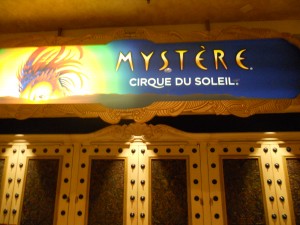 This space just has so much history to it. It was great to walk down the hall of memories and see regards to past and present performers, singed drum sticks, a drum head from a large Japanese drum etc…
This space just has so much history to it. It was great to walk down the hall of memories and see regards to past and present performers, singed drum sticks, a drum head from a large Japanese drum etc…
One of the coolest elements for me though was the paint treatment all over the set. It was my favorite of any show I have ever seen. Maybe thats because I’ve spent way to much time with my scenic painter/ set designer girlfriend, but it was fascinating to see the different treatments and techniques, as well to learn that the original floor had anywhere from 90 to 200 different layers of paint. In all it seems like a great show and has tons and tons of history.
This experience has been like none other. I want to thank all those at Cirque and USITT for this opportunity, my brain is full with so much more information all of which I will bring back and share with my fellow peers. Students, I urge you all to apply for next year’s Elite Weekend. It was a simple FREE application form, for a wonderful FREE training seminar. So if you want to see what it is Cirque does and how they do it, fill out and application and APPLY APPLY APPLY!
Once again thank you everyone at Cirque and USITT as well as my fellow students, many bonds were made this weekend and thru the awesome world of Facebook I hope we will continue to see each other in the future.
Thank you everyone, it’s been a blast!
USITT Elite Training – Day 2
Day 2 is over and done. And what a day it was.
Training started bright and early, however due to a malfunctioning alarm clock I was a tad late. That aside, when I arrived we were working with the control boards that Stage Technologies offer. I started with sharing the Nomad with my buddy Joe. For coming in late, I was able to quickly catch up in learning the command syntax and the basic programming nature of the eChameleon software.
One of the hardest parts however was to let go of all the training I’ve had with light boards. Automation control boards look similar, and have similar button layouts, but the syntax and meanings are all different. So in order to learn eChameleon best, I had to stop thinking lighting and just focus on the board in front of me. A change in syntax that I thought was interesting however was that “RECORD” was a terminal command, no hitting enter afterwards.
So after quickly learning basic syntax, we were off to programming some moves in the offline editor. We started with a mexican wave, in which we were given certain parameters like total time and how many cycles the bars must do, and travel distance. So then with those parameters we had to figure out the rest on our own. For this portion a handy pad of graph paper really helps. After completion of that we were instructed to complete a more practical effect, the Mary Poppins proscenium tap-dance. Let me tell you, seems very complicated but by keeping to our instructors motto of KISS (Keep it Simple Stupid) we were able to replicate the move instructions similar to the actual ones in the show.
After an awesome lunch, we had a bit more class but were quickly whisked off for our tour of Viva Elvis. The minute we walked in the space or jaws dropped. The house for this show is just huge. As well they probably had the comfiest theatre seats I have seen or felt. On stage they were testing many of the smaller lifts as well as some sequences with the 8 LED moving panels. To see them come together and play one video was plain awesome. Backstage it just got even better. Down in the basement we saw all the storage for many of the set pieces that take some of the many large lifts up to stage. What was really cool to see is just how they got them onto the lifts and also to see how they connected things like power, data, and microphones to the set pieces. Back upstairs on stage we saw one of the biggest set pieces I have ever laid eyes on. The set piece was of an amusement park and it was most likely around 80′ wide by 15′ deep and maybe 30′ tall. Riggers actually have to fly in to get to the top levels of the set piece in order to clean it. but the most fantastic part of all of this, is that the set piece in all it’s huge glory is actually flown for storage! On a lighting note, not a single conventional besides 6 practicals on set pieces. 300+ moving lights do the work on this show. That was my first experience with a entirely moving light rig. We summed up or tour had a quick dinner, then 5 of us were of to shadow for KÀ.
Our group was split up in 3 groups by the automation team. For the first show I had the privilege to shadow the operator at the front of house booth control position. Best part though, they provided us with com to hear how the entire show is called and ran. As well our station was situated right between the calling Stage Manager and the SFX board op. This was a great one of kind experience and after experiencing that and having conversations with the stage managers and the board ops I have so many ideas to bring back to my peers.
For the second show, 3 of us were situated in the front row of the house to get an audience perspective. Being so close, we were really able to “feel” the show. It was a really cool experience, knowing what was supposed to happen when and to see it with an educated view.
So day 2 has wrapped up and we have one more day. Once again this has been an amazing experience, and the part that makes me the most excited is how much I can bring back and share with my peers, and with you.
Day 3 is up next with more training and the final tour, Mystere.
USITT Elite Training – Day 1
[singlepic id=1796 w=320 h=240 float=left]It’s 1:12AM here in Vegas. I just finished the day and I am back at the hotel. Whew, was I mentally out of shape for today’s events. We started at 9AM with great welcoming to the training center by Cirque Du Soleil’s very own Kim Scott, Director of Show Support Resident Shows Division. Followed by that was an inspiring and warming presentation by Calum Pearson, Senior Director of Technical and Show Support. And by 10AM we were off to our respective classrooms for the first session of classes.
That’s when I met my instructor Alex Hitchcock, Training Development Manager for Stage Technologies. He is a great guy with a passion to share his knowledge. The first 3 hours were jammed pack with basic facts and examples of who, when, where, why, and how automation is used across our industry. One of the facts that truly stuck with me is that the automation industry is on the rise at about 15% PER YEAR! That kind of growth for any industry is spectacular.
After enjoying a wonderful lunch provided by Cirque, we were back to the classroom for a brief overview on all the components of an automation system and a basic overview of the eChameleon, the software used in Stage Technology’s control desks.
Then it was off to our first backstage tour. The show… KÀ. I had seen the show once before during LDI last fall and I was just stunned at the amount of production value this show contained. As described by our guide, this show is the show of mosts, firsts and onlys. It is most expensive show ever, has biggest seamless scrim anywhere, and the list goes on and on. What was the most fascinating and jaw dropping however, was that the stage ‘void’ was really a small fraction of the theatre space. Backstage employees and performers have to constantly go up and down elevators and stairs of the spaces 9 floors! This is such a big element of the show, they even had to add the elevator as apart of the cue stack to ensure performers and technicians get to where they need to be when they need to be there. If you ever get the chance, meet someone who works at KÀ and persuade them to get you a tour of the space. We were lucky enough to see them do all the pre-show checks, which were educational, fun and mildly amusing… “THIS IS THE VOICE OF GOD. TESTING”
That was the end of the Elite Training Weekend itinerary. But after all it’s all about networking. A small group of us, Bryce Munro, Timothy Pedro and myself attended Blue Man Group, laughing our tired butts off the entire time.
All in all it was a great first day. Tomorrow we will be in front of the control desks in class and touring Viva Elvis later. As well I have two job shadows of KÀ that evening.
We’re staying busy here, so I apologize for the delay of these posts.
Thanks to everyone involved with putting this program together, and a special thanks to David Grindle, Executive Director of USITT, for pushing this thru. And of course to you guys, the readers.
Welcome New Guest Writer: Drew Carter
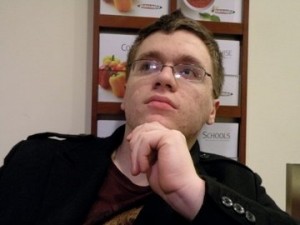 Hey guys! My name is Drew Carter, and for the next few days I will be writing here on isquint.net on my daily experience while attending the first ever USITT Elite Training Weekend. I’m a junior BFA Design/ Tech student at Central Washington University in beautiful Ellensburg, WA.
Hey guys! My name is Drew Carter, and for the next few days I will be writing here on isquint.net on my daily experience while attending the first ever USITT Elite Training Weekend. I’m a junior BFA Design/ Tech student at Central Washington University in beautiful Ellensburg, WA.
At the end of March I was accepted into the program to spend 3 days in Las Vegas, NV learning technology at Cirque Du Soleil’s resident show training center. So 31 others and I will be split into groups of eight and study in one of four areas; audio, rigging, multimedia, and automation. I will be studying automation, which will include lessons in products and solutions from Stage Technologies. As well, all of us will tour backstage of Viva Elvis, Mystere, and KÀ. On top of all this we all have the opportunity to job shadow on a show. For the automation group we will shadow KÀ, one show backstage, and one show from the booth.
While I’m there learning about automation (something I am very UNfamiliar with) I will post new things learned, my experiences with the technology, and hopefully pictures of the technology used in action! But alas, I am a lighting guy first and foremost so a few lighting pron pictures may show up…
I’m very excited to be here writing and I hope you enjoy!
#USITT: Students Review
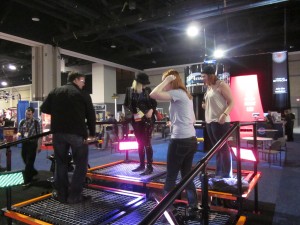 Now that USITT is over, its time to return to real life, as much as we would rather pretend it doesn’t exist. I’ve had an awesome time this week catching up with old friends, making new friends, walking the floor, and as always learning even more about the opportunities in our future after school. I walked around today asking students what they thought of the conference, and if they were coming back next year, and found that USITT was getting glowing reviews:
Now that USITT is over, its time to return to real life, as much as we would rather pretend it doesn’t exist. I’ve had an awesome time this week catching up with old friends, making new friends, walking the floor, and as always learning even more about the opportunities in our future after school. I walked around today asking students what they thought of the conference, and if they were coming back next year, and found that USITT was getting glowing reviews:
“I’m loving the expo, the swag is spectacular! The sessions are great and I’m already planning for next year.”
-Z.P. – Western Kentucky University
“The last few days I’ve been so excited. For the first half hour on the expo floor I couldn’t stop smiling and taking pictures. This conference has been amazing, and I want to live here. I’m in techie heaven!”
-A.B. – Arts University College at Bournemouth
“As a sophomore, I really enjoyed this opportunity, but I’ll probably wait until senior year to come back for networking and employment opportunities. Its good to know that this is available.”
-C.G. – Emerson College
“Everyone seems really interested in what’s going on, which is much different from last year. Its very nice that people are interested in what’s going on and happy to be here.”
-B.G. – West Texas A&M
“I’ve seen that USITT offered many more opportunities as far as grad schools and jobs. Overall it’s been an amazing experience. I’m definitely coming back next year.”
-L.G. – Berea College
“This was my first time attending the conference and it was excellent to meet professionals in the industry and to network through those professionals is a great experience for undergrad and grad students. I’m definitely coming back next year.”
-B.G. – University of Oklahoma
“It was fantastic, amazing, awesome, pretty darn cool! My favorite part was the show floor, networking with people, meeting new people, making connections. I hope to be back next year.”
-S.U. – Virginia Commonwealth University
“The show floor was smaller then previous years, which gave more of a sense of community between vendors and designers, etcetera. It was good that there were more student geared sessions, where professors weren’t allowed.”
-D.M. – CalArts
The show floor this year was an amazing opportunity for everyone that made it, students, vendors, and professional alike. Hopefully next year can uphold the excellence that we’ve all come to expect, and continue to make attending the conference worthwhile. USITT strives to be specifically geared toward students and education, and this year they really managed to achieve that goal. I’ll definitely be attending in long beach next year, and I know a lot of students who I’ll be seeing there!
#USITT: Walking the Floor
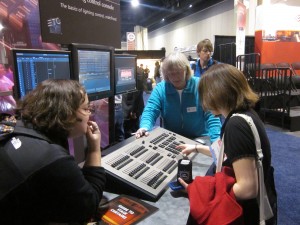 The second day of USITT is over, and I feel like I’ve thoroughly explored the floor. Meeting people, seeing the sights, and visiting with friends is half the draw of the conference. Its up to students to get the most out of the booths, unlike sessions, they don’t cater straight to us! The goal is to learn everything about new technology and the companies that sell it in as little time as possible, and USITT can be the perfect place.
The second day of USITT is over, and I feel like I’ve thoroughly explored the floor. Meeting people, seeing the sights, and visiting with friends is half the draw of the conference. Its up to students to get the most out of the booths, unlike sessions, they don’t cater straight to us! The goal is to learn everything about new technology and the companies that sell it in as little time as possible, and USITT can be the perfect place.
Talking to strangers can be intimidating, especially if they look at all busy. In my own experience, and from chatting with others, I’ve found that the best exhibitors are the ones that make any visitor feel welcome and who are willing to talk about their products whether you’re a potential buyer or a curious student. ETC, StageSpot, and Lee Filters have been three of the most student friendly booths at this conference, at least among the people I’ve talked to. ETC always is amazing, they have plenty of representatives so they don’t get overwhelmed, and there is always a product to see and learn about. The people at StageSpot have been great, they’re eager to answer any questions and show off their tools to any student who is interested in new toys. And Lee Filers is always fun, happy to talk about the products and find the swatch that matches my hair!
The floor is covered with technology, and it’s not just for looking. I’ve talked to many students today who rave about having the ability to play with the consoles and fixtures that make them drool. The products showcased at the booths provide an excellent opportunity for those willing to take advantage, for students to see what is out there and what it can do. Many of us won’t get a chance to work with such fantastic gear while still in school, so USITT is the perfect place to see where the industry is going and to start thinking about the future of design.
The most important thing to remember is that there is more to be gained from the booths then the swag. Fortunately, it’s not too late to get the most out of the show floor, we still have one more day! It’s been a great conference so far, and I’m looking forward to spending today making sure I didn’t miss a thing.
#USITT2011: Students on Sessions
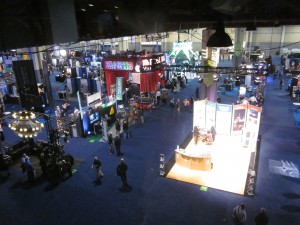 If you’re going to pay for a conference like USITT, there is no reason not to go to as many sessions as possible. All the students I talked to have spent the last two days running from one session to another, trying to get the most out of their time in Charlotte. I’ve asked a bunch of students to tell me what they think of the sessions so far, and they all seem to have the same idea of the ideal structure. When trying to identify a good session, storytelling is good, but only if its humorous, and having enough information to fill the time slot is crucial. The presenters, much like any college professor, have to be interesting and fun to hold the attention of an audience, no matter how important the information they’re presenting is.
If you’re going to pay for a conference like USITT, there is no reason not to go to as many sessions as possible. All the students I talked to have spent the last two days running from one session to another, trying to get the most out of their time in Charlotte. I’ve asked a bunch of students to tell me what they think of the sessions so far, and they all seem to have the same idea of the ideal structure. When trying to identify a good session, storytelling is good, but only if its humorous, and having enough information to fill the time slot is crucial. The presenters, much like any college professor, have to be interesting and fun to hold the attention of an audience, no matter how important the information they’re presenting is.
In my opinion, the best sessions are those that are not only engaging, but cater to the interests of multiple disciplines. Lighting for Costumes, Makeup, and the Multi-Ethnic Cast in particular is a session that I wish I could have made, as I have heard from both a lighting designer and makeup designer that it was phenomenal. It apparently had it all, a humorous presenter, enthusiastic audience participation, and information that could be valuable and interesting to everyone, not just the lighting designers it was geared towards.
However, in many respects, there are a lot of sessions missing the mark when aimed towards students. We all attend this conference to learn something new, not take a class that’s offered in our schools, so the level of the information should be accessible to every student who wants to be involved. From everyone I’ve talked to, the split between fantastic and going completely over their head is a close one, and there is about a 50% chance that the session will be worth it. Luckily for us, this isn’t college, and if you don’t get it you don’t have to stick around! Head back out to the floor and wait it out, or pop into the next room, a little extra learning never hurts!
So far USITT has been so much fun, and I can’t wait for tomorrow when I’ll be hitting the floor, chatting with people, and just exploring!
#USITT2011 is Tomorrow!
 USITT is tomorrow! I know I’m ready, I’ve been spending the first half of spring break sitting around my dorm avoiding the homework that’s been piling up and surviving on quesadillas cooked on the George Foreman. Business cards in pocket, clothes packed, plane to catch, its time for an adventure!
USITT is tomorrow! I know I’m ready, I’ve been spending the first half of spring break sitting around my dorm avoiding the homework that’s been piling up and surviving on quesadillas cooked on the George Foreman. Business cards in pocket, clothes packed, plane to catch, its time for an adventure!
I’m not sure what part of the conference I’m most excited for, there is so much going on. Beyond all the fantastic opportunities and displays on the show floor, the events taking place in the evenings are amazing for catching up with old friends, meeting new people, and a generally awesome time.
Nighttime fun aside, the show floor is an obvious draw for students to the conference. I know I love looking around the booths, asking questions about products, and learning about the new technology that I don’t get exposed to at school. The sessions are also a huge opportunity for students looking to learn from industry professionals of the different opportunities a future in this field can hold. I’ll let you know what I find when the show floor opens tomorrow, and I hope to see you there!
Useful Development Re-Releasing USITT App for iOS AND Droid
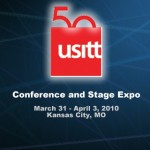 I just heard from the iOS developer, Useful Development, that they are re-launching the USITT App for this years Conference and Stage Expo in Charlotte North Carolina. You may remember last years conference when Useful Development announced and released the iOS app, USITT 2010, as a replacement for the printed conference and stage expo guide. The app served as a tool to locate sessions, conference events and of course a map to the stage expo to find any given exhibitor you may have been looking for.
I just heard from the iOS developer, Useful Development, that they are re-launching the USITT App for this years Conference and Stage Expo in Charlotte North Carolina. You may remember last years conference when Useful Development announced and released the iOS app, USITT 2010, as a replacement for the printed conference and stage expo guide. The app served as a tool to locate sessions, conference events and of course a map to the stage expo to find any given exhibitor you may have been looking for.
With the upcoming release, it not only is getting update with the 2011 conference and stage expo information, but a couple of other useful additions. I am not sure yet what some of these new features may be, but one thing now iOS device owners will welcome, the USITT app will be available for the Android as well!
Useful Development has taken all of the feedback and advice from last years conference and revamped and reorganized the app to make it even more powerful of a tool while in Charlotte. Be on the look out for more information about the USITT app during February.
Books: Late & Great: American Designers 1960-2010
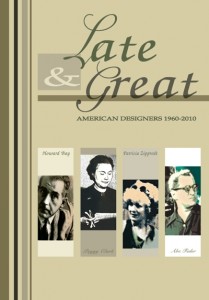 I am a huge history buff. I just can’t get enough learning about our past! ESPECIALLY when it comes to our industry. I’ve mentioned it before and I’ll say it again. I feel that we should look to the past and learn about where we can from to help us move forward. History has a way of foretelling our future in some way shape or form. Will history tell us what the next great thing is, probably not, but think about trends.
I am a huge history buff. I just can’t get enough learning about our past! ESPECIALLY when it comes to our industry. I’ve mentioned it before and I’ll say it again. I feel that we should look to the past and learn about where we can from to help us move forward. History has a way of foretelling our future in some way shape or form. Will history tell us what the next great thing is, probably not, but think about trends.
Back to the book. USITT has announced the release of their latest book, Late & Great: American Designers, 1960-2010. The book is written by Bobbie Owen but 27 authors contributed to producing this look into our history. Here is a little more from the description.
Designers participate in the creation of art and entertainment productions with the same level of professionalism as performers and directors, but their names are less often remembered and their contributions can often recede into the collective memory. Late & Great: American Designers 1960-2010 helps to raise designers’ public profile by honoring 25 designers with a record of their artistry.
The book is published by Broadway Press and is available through the USITT website, www.usitt.org for $40 USD for current USITT members and $45 USD for non-members.
LatestHeadlines
- Upgrading Your Toolbox: City Theatrical DMXcat-E and DMXcat Multi Function Test Tool
- Claypaky Bringing Back the Sexy to Par Cans with the Midi-B FX
- Ayrton Evolves the Cobra, the Cobra2 Developed for the US Market
- MA Lighting Intros grandMA3 onPC Fader Wing and DIN-Rail Nodes
- Live Events LEVL Up Fest: A Festival to Aid our Industry
